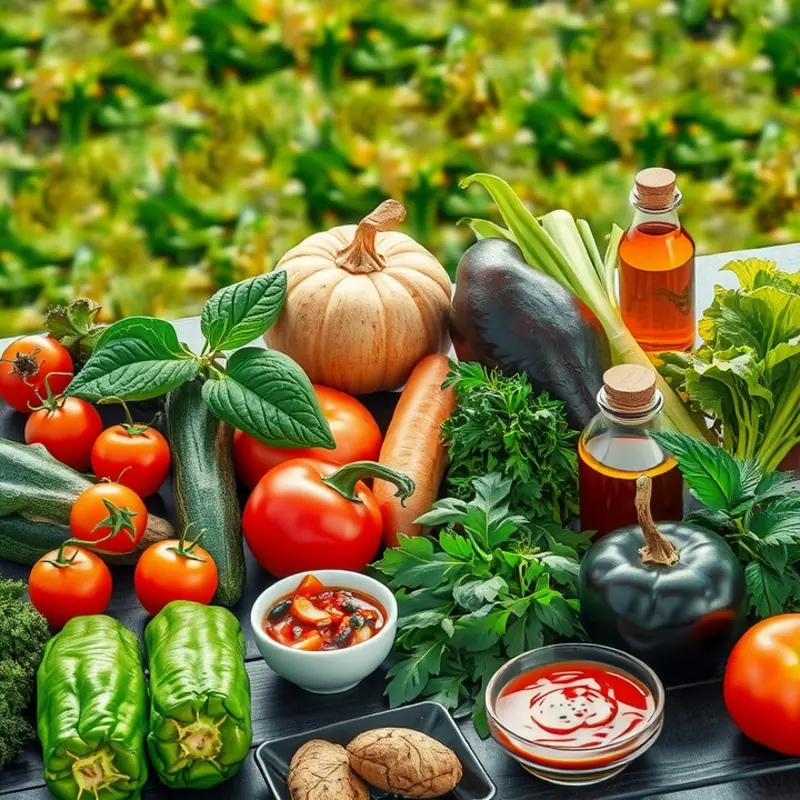For those avoiding soy, finding umami-flavored ingredients can be a challenge. Luckily, a variety of soy-free alternatives can add depth and richness to your dishes. In this guide, we’ll explore several umami ingredients and provide practical substitutions that cater to home cooks and those conscious of their dietary choices.
Embracing Alternative Umami Sources

Unlocking the world of umami without soy starts with understanding the depth of this savory flavor. Nature provides us with a myriad of soy-free options that can elevate any dish, from everyday meals to gourmet presentations. Each ingredient brings its unique character, allowing us to explore and expand our culinary horizons.
Mushrooms: The Forest’s Treasure
Mushrooms are a cornerstone of umami-rich flavors. Varieties such as shiitake, porcini, and oyster mushrooms are packed with glutamates. Whether used fresh or dried, these mushrooms offer a concentrated savory taste. When cooking, try sautéing fresh mushrooms in olive oil or butter to deepen their flavors. Dried mushrooms can be rehydrated and added to stocks or sauces to intensify the umami.
For a simple flavor boost, consider adding dried mushroom powder to soups or stews. This technique infuses dishes with an earthy depth, enhancing their overall taste profile effortlessly.
Nutritional Yeast: The Vegan’s Cheese
Nutritional yeast is a versatile powerhouse in plant-based cooking. It’s rich in umami, providing a cheesy, nutty flavor that complements various dishes. Sprinkle it onto salads, pasta, or popcorn for a nutrient-packed kick. It’s a dynamic ingredient for those avoiding both soy and dairy, creating a creamy texture without the use of cheese.
To incorporate nutritional yeast into sauces or dressings, whisk it with vinegar or lemon juice to create a tangy, umami-rich blend. This not only enhances flavor but also boosts the nutritional profile of your meals.
Seaweed: Oceanic Umami
For a touch of marine umami, seaweed is unparalleled. Varieties like kombu and nori are used worldwide to enrich broths and season dishes. Kombu, a type of kelp, is often simmered in water for dashi—a stock base in Japanese cuisine that can serve as an umami bomb.
Integrating seaweed into meals can be as simple as using crumbled nori sheets as a seasoning for rice or vegetables. These options provide a subtle hint of the sea that pairs well with a wide array of ingredients.
Fermented Foods: The Depth of Time
Fermentation enhances umami by breaking down proteins into flavorful amino acids. While traditional soy-based fermented products are off the table, other options abound. Try using tamari alternatives made without soy or experimenting with miso-like spreads crafted from chickpeas.
Adding fermented vegetables, like sauerkraut or kimchi, to your dishes can vastly increase the umami profile. These ingredients provide a pungent, robust taste that adds complexity to simple meals.
Deploying these alternatives can empower your kitchen creativity, opening new doors to flavor exploration. You can find more ideas and substitutions in this helpful guide on flavor boosters without salt, ensuring every meal is a delight.
Instead of leaning on soy, embracing these diverse umami sources enriches your culinary experience, making every bite a testament to the joys of the kitchen.
Creating Rich Flavors with Simple Substitutions

Crafting a delicious, umami-rich dish without soy is simpler than you might think. Whether due to allergies, dietary choices, or simply wanting a change in flavor, there are several wonderful substitutes available.
Coconut aminos is one of the most popular soy-free alternatives to soy sauce. Made from the fermented sap of coconut palm and sea salt, it offers a slightly sweet yet tangy flavor profile. It’s a versatile ingredient that can be used in stir-fries, marinades, and dressings. When substituting coconut aminos for soy sauce, use a 1:1 ratio to maintain the desired level of saltiness and depth.
Another excellent ingredient is miso, which is traditionally made from fermented soybeans but can also be found made from chickpeas or other grains. Miso adds a rich, deep flavor due to its fermentation process, making it a powerful umami booster. Incorporate chickpea miso into soups, stews, or even salad dressings. Begin with a small amount and adjust to taste, as miso can be quite potent.
Tamari is often confused with soy sauce, but it’s generally gluten-free and has a slightly different taste. Although not entirely soy-free, tamari is less likely to contain wheat, making it suitable for those with gluten sensitivities. If you seek a reduction in soy intake rather than complete elimination, tamari can still be an option. Its deeper umami flavor is particularly suited for hearty dishes like braises or roasted vegetables.
When making substitutions, don’t forget to harmonize your dish with complementary flavors. For instance, include acidic components like rice vinegar or citrus to balance the savory notes. Furthermore, the addition of nutritional yeast can boost the umami factor. This deactivated yeast provides a cheesy, nutty flavor and is high in B-vitamins. Sprinkle it over pasta, popcorn, or vegetable dishes as a finishing touch.
Incorporating these ingredients not only diversifies flavor but also contributes to a more sustainable kitchen practice. For tips on minimizing waste while experimenting with these substitutions, explore our guide on low-waste cooking prep.
Embrace the art of substitution and discover how small changes can lead to surprisingly satisfying results. Experiment with proportions, keep tasting, and soon you’ll find the perfect combination that delights your palate without a hint of soy.
Final words
Embracing soy-free umami ingredients opens a world of flavor and creativity in your cooking. With alternatives like mushrooms, nutritional yeast, and various sauces, you can enhance the taste of your dishes while adhering to your dietary needs. By exploring these options and making simple substitutions, you can create rich, satisfying meals that are both delicious and nourishing. Dive into your kitchen with this newfound inspiration!







